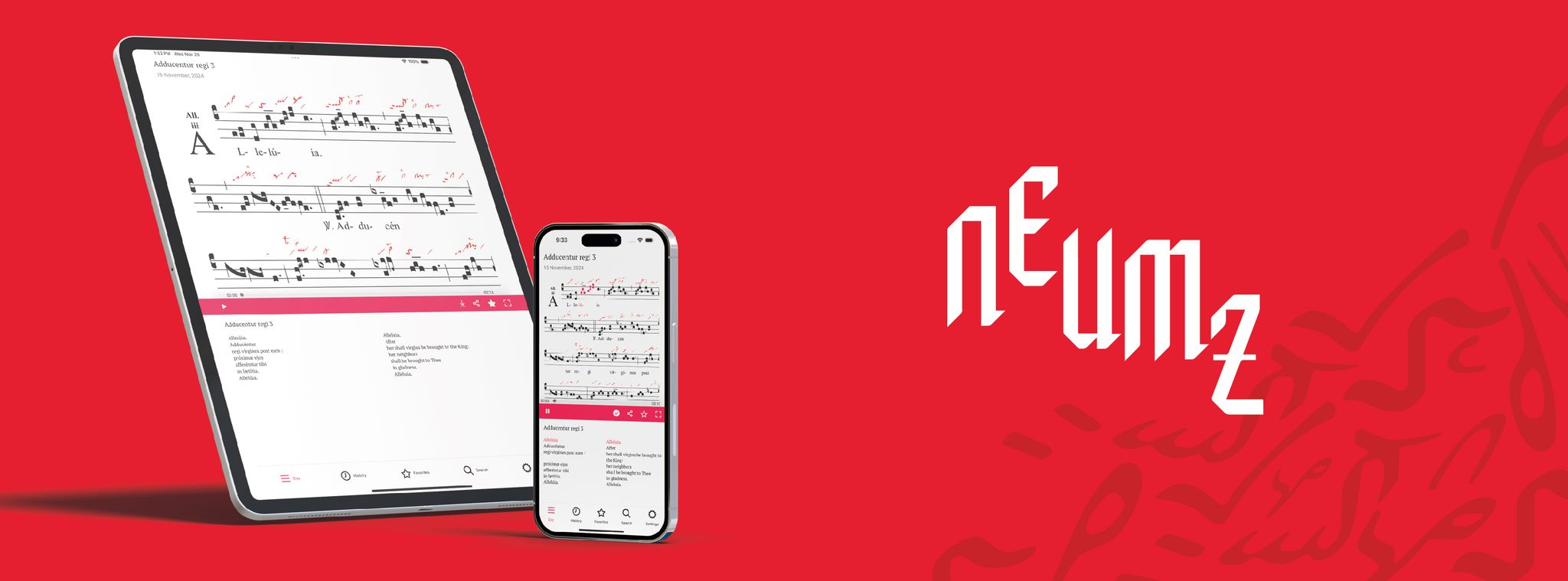Omnes Qui In Christo 2
Today we celebrate the feast of the Baptism of the Lord. It is celebrated on the Sunday following the feast of the Epiphany and marks the culmination of the whole cycle of the birth or manifestation of the Lord. It is also the Sunday that marks the beginning of Ordinary Time.
The baptism of Jesus in the river Jordan constitutes for the four evangelists the most important manifestation at the very beginning of the public life of Christ. Moreover, this event in the life of Jesus, seen as an essential starting point, is of great fullness because it is also a revelation of the effects of our own baptism: Jesus entered the water to sanctify it and make it sanctifying, and, no doubt, to bury in it all the old Adam, sanctifying the Jordan for our sake; and thus the Lord, who was spirit and flesh, consecrates us through the Spirit and the water.
To celebrate this feast, we at Neumz have chosen the Communion antiphon, Omnes qui in Christo. The text is taken from the letter to the Galatians 3: 27 and expresses the proper moment of Eucharistic communion. However, the form that this communion with Christ takes has a very particular nuance: to enter into communion with Christ is to "put on" Christ. And we know, both through Baptism and also for monks and nuns through monastic profession, that this clothing implies a very concrete reality of taking on a particular garment that symbolises Christ (the baptismal rite of investiture). This is a very biblical symbolism whereby the garment re-presents the person himself.
Musically, this mode 2 piece revolves around its fundamental note, the D, which in this song represents the figure of Christ. The two times that the melody sings of "Christ" it does so in D and with the richest sonorous movement of this mode, which is the third D-F. There Christ is located, the Baptism, the Eucharist, and the rest of the melody, whether in movements towards the bass, as in the intonation (omnes), or towards the treble (baptizati estis), everything revolves around Christ, in Him they all converge. This is the musical symbolism of this melody, so strongly rooted in its fundamental.
This Communion antiphon must be intoned respecting all the gravity of the melody (Omnes qui in Christo), going down to the low A to move around the fundamental D and take the whole musical world towards Christ, where the first cadence is given. From this point onwards the melody goes in search of what is in the treble (estis), reserving the D-F movement exclusively throughout the piece to express the Baptism (baptizati). The use of the bivirga in the pretonic position, in the dominant, the F, is very interesting: it appears for the first time in baptizati and then twice in two consecutive pretonic bivirgas in induistis and alleluia, at the end. In addition to the function of preparing the accent of the word in order to emphasise it even more, this musical device also highlights the semantic force that St Paul wishes to confer on Baptism: as we wrote above, to be clothed implies taking on a particular garment that symbolises Christ, and at the moment of Communion (common union) we are clothed with Christ’s Light, we are one with Christ and in Christ; a mystical union takes place: this is what is manifested in this piece by the musical and semantic union of baptizati, induistis, alleluia. It is also worth noting the beautiful melodic twist that masterfully invests the word estis with great joy, tracing an arc from low C to G to return to C supported by two pillars in the form of a chylism: baptism, being reborn from water, elevates us, strengthens us; we feel firm here on Earth (C) but with our gaze set on Heaven (G).
The second part (Christum induistis), musically realises what it proclaims: the melody covers and clothes "with Christ" in the fundamental all those who up to here have been "recapitulated" from the bass to the treble. The movement starts from Christ (the D) and returns to Him. The final alleluia again uses the D-F characteristic of mode 2, but in the opposite direction. With great simplicity, but also richness, it closes the whole piece with a gentle rest in the fundamental.
